Related Research Articles

A clipper was a type of mid-19th-century merchant sailing vessel, designed for speed. Clippers were generally narrow for their length, small by later 19th-century standards, could carry limited bulk freight, and had a large total sail area. "Clipper" does not refer to a specific sailplan; clippers may be schooners, brigs, brigantines, etc., as well as full-rigged ships. Clippers were mostly constructed in British and American shipyards, although France, Brazil, the Netherlands, and other nations also produced some. Clippers sailed all over the world, primarily on the trade routes between the United Kingdom and China, in transatlantic trade, and on the New York-to-San Francisco route around Cape Horn during the California Gold Rush. Dutch clippers were built beginning in the 1850s for the tea trade and passenger service to Java.
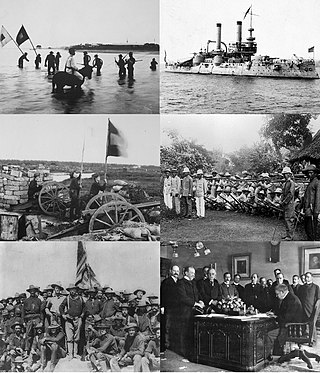
The Spanish–American War began in the aftermath of the internal explosion of USS Maine in Havana Harbor in Cuba, leading to United States intervention in the Cuban War of Independence. The war led to the United States emerging predominant in the Caribbean region, and resulted in U.S. acquisition of Puerto Rico, Guam, and the Philippines. It also led to United States involvement in the Philippine Revolution and later to the Philippine–American War.
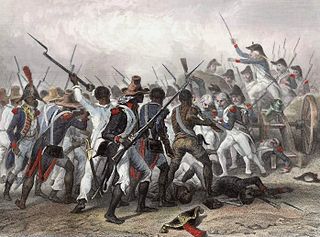
United States v. Schooner Amistad, 40 U.S. 518 (1841), was a United States Supreme Court case resulting from the rebellion of Africans on board the Spanish schooner La Amistad in 1839. It was an unusual freedom suit that involved international diplomacy as well as United States law. The historian Samuel Eliot Morison described it in 1969 as the most important court case involving slavery before being eclipsed by that of Dred Scott v. Sandford in 1857.

The Ostend Manifesto, also known as the Ostend Circular, was a document written in 1854 that described the rationale for the United States to purchase Cuba from Spain while implying that the U.S. should declare war if Spain refused. Cuba's annexation had long been a goal of U.S. slaveholding expansionists. At the national level, American leaders had been satisfied to have the island remain in weak Spanish hands so long as it did not pass to a stronger power such as Britain or France. The Ostend Manifesto proposed a shift in foreign policy, justifying the use of force to seize Cuba in the name of national security. It resulted from debates over slavery in the United States, manifest destiny, and the Monroe Doctrine, as slaveholders sought new territory for the expansion of slavery.
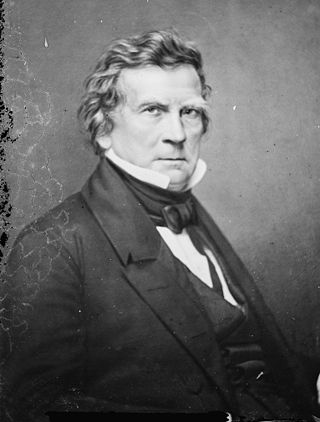
William Learned Marcy was an American lawyer, politician, and judge who served as U.S. Senator, Governor of New York, U.S. Secretary of War and U.S. Secretary of State. In the latter office, he negotiated the Gadsden Purchase, the last major acquisition of land in the contiguous United States.

Tonquin was a 290-ton American merchant ship initially operated by Fanning & Coles and later by the Pacific Fur Company (PFC), a subsidiary of the American Fur Company (AFC). Its first commander was Edmund Fanning, who sailed to the Qing Empire for valuable Chinese trade goods in 1807. The vessel was outfitted for another journey to China and then was sold to German-American entrepreneur John Jacob Astor. Included within his intricate plans to assume control over portions of the lucrative North American fur trade, the ship was intended to establish and supply trading outposts on the Pacific Northwest coast. Valuable animal furs purchased and trapped in the region would then be shipped to China, where consumer demand was high for particular pelts.
Tecora was a Portuguese slave ship of the early 19th century. The brig was built especially for the slave trade although the transport across the Atlantic of human beings as slaves had already been outlawed by several nations in international treaties in the first decade of the 19th century. She was fast and maneuverable in order to evade British patrols that attempted to stop such illegal slave ships off the coast of Africa.
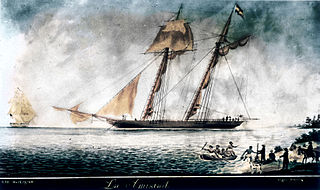
La Amistad was a 19th-century two-masted schooner owned by a Spaniard living in Cuba. It became renowned in July 1839 for a slave revolt by Mende captives who had been captured and sold to European slave traders and illegally transported by a Portuguese ship from West Africa to Cuba, in violation of European treaties against the Atlantic slave trade. Spanish plantation owners Don José Ruiz and Don Pedro Montes bought 53 captives in Havana, Cuba, including four children, and were transporting them on the ship to their plantations near Puerto Príncipe. The revolt began after the schooner's cook jokingly told the slaves that they were to be "killed, salted, and cooked." Sengbe Pieh unshackled himself and the others on the third day and started the revolt. They took control of the ship, killing the captain and the cook. Three Africans were also killed in the melee.
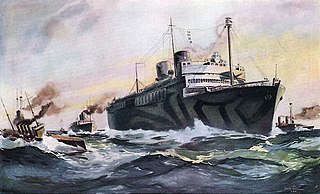
USS Siboney (ID-2999) was a United States Navy troopship in World War I. She was the sister ship of USS Orizaba (ID-1536). Launched as SS Oriente, she was soon renamed after Siboney, Cuba, a landing site of United States forces during the Spanish–American War. After her navy service ended, she was SS Siboney for the New York & Cuba Mail Steamship Co.. The ship was operated under charter by American Export Lines beginning in late 1940. During World War II she served the U.S. Army as transport USAT Siboney and as hospital ship USAHS Charles A. Stafford.
USS Magnolia was a steamer captured by the Union Navy during the American Civil War. She was planned to be used by the Union Navy to patrol navigable waterways of the Confederacy to prevent the South from trading with other countries.

The troubled history of Spanish–American relations has been seen as one of "love and hate". The groundwork was laid by the colonization of parts of the Americas by Spain before 1700. The Spaniards were the first Europeans to establish a permanent settlement in what is now United States territory. The first settlement in modern-day United States territory was San Juan, Puerto Rico, founded in 1521 by Spanish explorer Juan Ponce de León. 35 years later, Spanish admiral Pedro Menéndez de Avilés founded the city of St. Augustine, Spanish Florida, which became a small outpost that never grew very large. More permanent, much larger colonies were established in New Mexico and California, with a few in Texas and Arizona, forming part of the colonial history of the United States. Although the Spanish elements in the history of the United States were mostly ignored by American historians in the decades after independence, the concept of the "Spanish borderlands" in the American Southwest was developed by American historians in the 20th century, which integrated Spain into U.S. history.
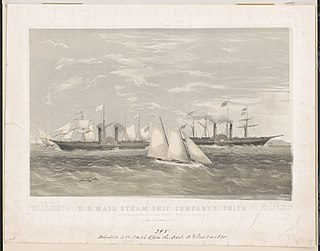
U.S. Mail Steamship Company was a company formed in 1848 by George Law, Marshall Owen Roberts and Bowes R. McIlvaine to assume the contract to carry the U. S. mails from New York City, with stops in New Orleans and Havana, to the Isthmus of Panama for delivery in California. The company had the SS Ohio and the SS Georgia built in 1848, and with the purchased SS Falcon in early 1849 carried the first passengers by steamship to Chagres, on the east coast of the Isthmus of Panama. Soon the rapid transit time the steamship lines and the trans isthmus passage made possible when the California Gold Rush began made it a very profitable company.
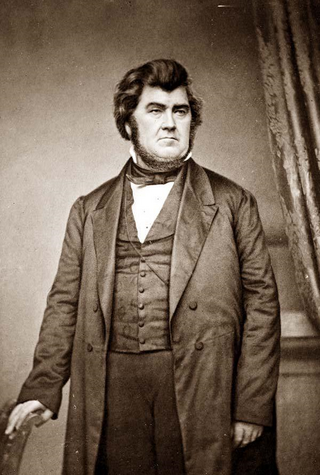
George Law was an American entrepreneur and failed presidential candidate for the American Party in the 1856 United States presidential election from New York.

USAT McClellan was a United States Army transport ship that saw service during the Spanish–American War and World War I. She also participated in the occupation of Veracruz in 1914.
Events from the year 1854 in the United States.
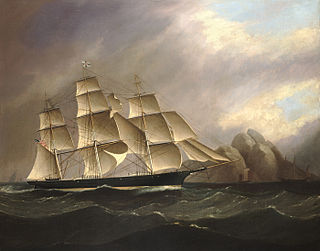
Ocean Telegraph was a clipper ship that was built in Massachusetts in 1854 and was last known of in Gibraltar in 1923. She was in US ownership until 1863, when UK interests bought her and renamed her Light Brigade.
SS Navemar was a cargo steamship that was built in England in 1921, was Norwegian-owned until 1927 and then Spanish-owned for the rest of her career. An Italian submarine sank her in the Strait of Gibraltar in 1942.

The history of U.S. foreign policy from 1861 to 1897 concerns the foreign policy of the United States during the presidential administrations of Abraham Lincoln, Andrew Johnson, Ulysses S. Grant, Rutherford B. Hayes, James A. Garfield, Chester A. Arthur, Grover Cleveland, and Benjamin Harrison. The period began with the outbreak of the American Civil War 1861 and ended with the 1897 inauguration of William McKinley, whose administration commenced a new period of U.S. foreign policy.

Tejuca was a small 470-ton clipper ship built in Hoboken, New Jersey in 1854. After only eighteen months of service, she was lost in a hurricane on the North Atlantic, with most of her crew rescued through a daring maneuver carried out by the ship Excelsior.
Kenwood Bridge was a steam cargo ship built in 1919 by Submarine Boat Company of Newark for the United States Shipping Board (USSB) as part of the wartime shipbuilding program of the Emergency Fleet Corporation (EFC) to restore the nation's Merchant Marine. In early 1920 the vessel was sold to Spanish company and renamed Leonita. In March 1921 while on passage to Italy with a cargo of coal she developed a leak and foundered.
References
- ↑ Janes, Henry Lorenzo (January 1907). "The Black Warrior Affair". The American Historical Review . 12 (2). American Historical Association: 280–298. doi:10.2307/1834051. ISSN 0002-8762. JSTOR 1834051.
- Dictionary of American History by James Truslow Adams, New York: Charles Scribner's Sons, 1940